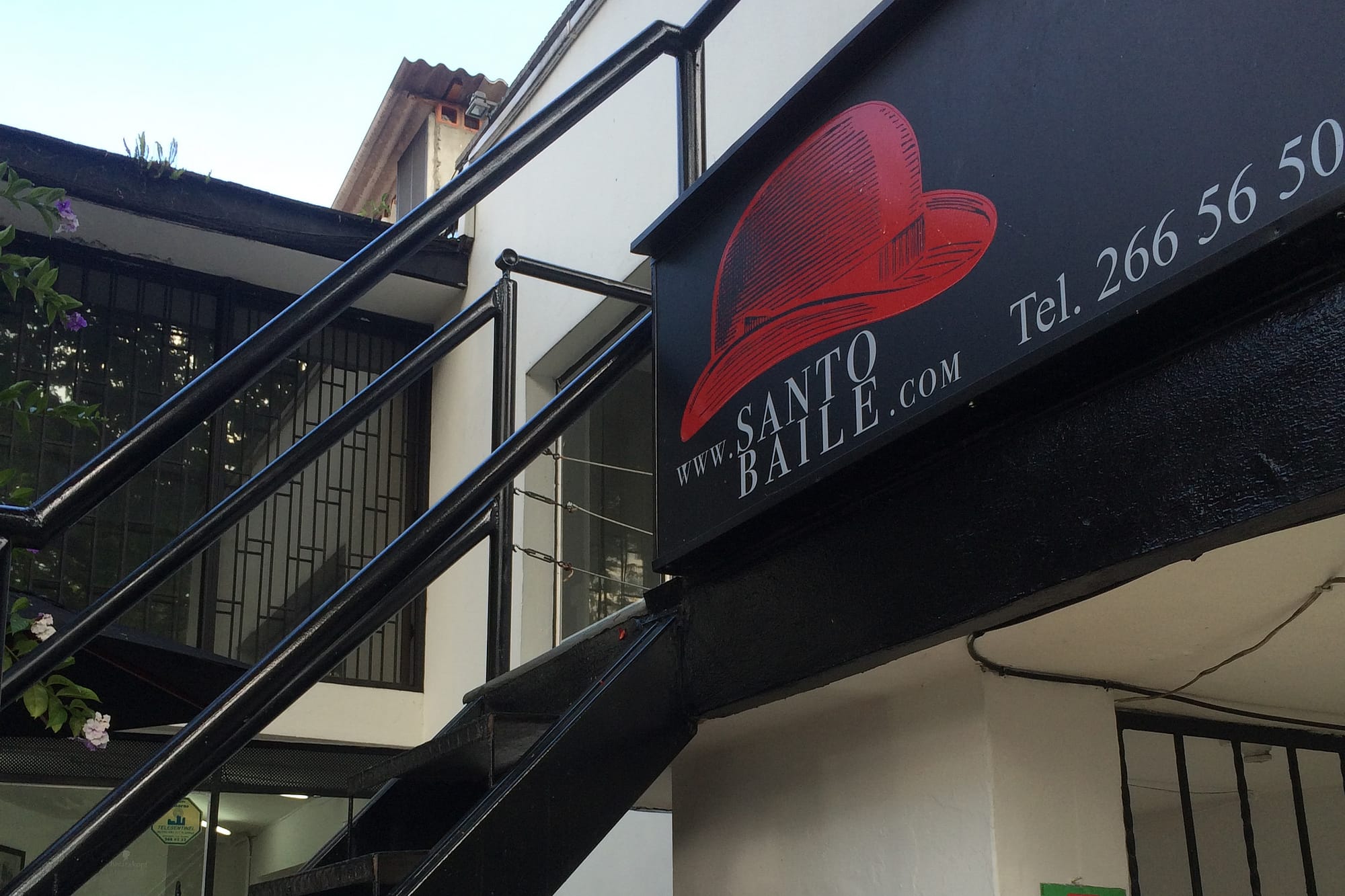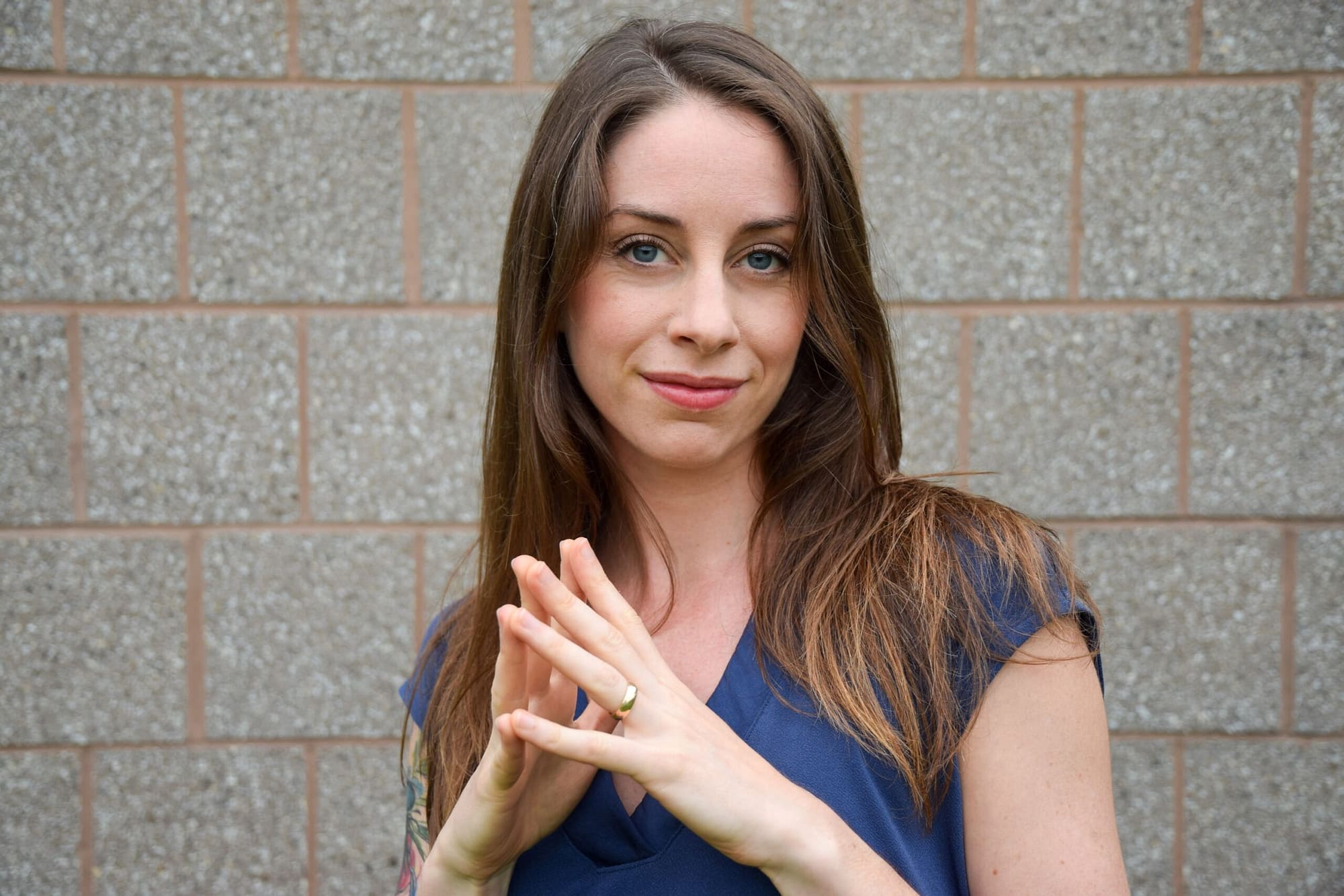I love a good analogy. Analogies help us understand things we’ve never experienced, and they let us see our own experiences in a new light. Happily for me, learning and practicing dance has revealed a mountain of analogies that apply to many other aspects of life. Maybe one day I’ll collect these gems in a snazzy illustrated book or something, but for now I’ll settle for sharing a couple revelations with you here: one old, one new.
What is salsa caleña?
Aside from daily Spanish classes, my routine here in Colombia also includes salsa lessons a few times a week at Santo Baile, a dance school in Poblado. They have group classes, but I’m splurging on private lessons because I want to learn as much as possible in my limited time here, and the current strength of the U.S. dollar makes it a serious bargain compared to private lesson back home. They teach several different kinds of dance, including bachata, kizomba, and a variety of salsa styles. For four weeks now I’ve been working on salsa caleña, a style that originated in the Colombian city of Cali and involves crazy fast footwork and some serious arm styling.
Most of my dance experience is in swing and blues, so I’m a relative newcomer to Latin dance styles like salsa and bachata. My background in partner dancing means I have fairly solid following skills, and my ballet training means I’m comfortable with turns, which are at the core of salsa. What I lack is style, which is exactly what the teacher told me at my first lesson. All of my lessons so far have focused on generating the body movements that characterize salsa caleña and incorporating them into partner dancing. This is in contrast to the salsa lessons I’ve taken in Chicago, which are group classes focused mostly on improving lead and follow skills.
The caleña dance style goes hand in hand with a particular style of salsa music that is tends to be faster and have sharper percussion sounds in especially complex patterns. Salsa dancers typically step on 1-2-3 and 5-6-7, pausing on 4 and 8, but the super high energy of caleña music inspires more complicated footwork. This can be extra taps of the foot, swivels, or even cha-cha style steps, in which the dancers add three extra steps rather than pausing. If you think this sounds like a lot to deal with, you’re right…but of course, that’s not all!
As usual, the devil is in the details. You can tap and swivel all you want, but it won’t really look like salsa caleña without the characteristic hip and arm movements. Basic salsa styling includes hip and shoulder movements in a kind of figure-eight shape. On top of this, salsa caleña includes a little pop in the knee on the tap steps, an this knee movement helps drive the iconic caleña hip shake. This is complemented by quick, highly stylized arm movements that would strain the shoulder and wrist flexibility of any normal person (myself included). Now imagine doing all this with a partner!
Push the limits before you feel ready
The truth is, I’m not yet all that comfortable with even the basic figure-eight salsa styling (I get the impression that everyone I dance with can tell I’m a ballet dancer trying to salsa), and I probably won’t get many opportunities to use these skills after I leave Colombia (salsa caleña is not very common in the US). So why am I doing this? The reason is something I first understood in the context of ballet, but which I have since realized applies to pretty much any skill: I make the most progress when I’m continually pushing the furthest limits of my abilities, no matter how uncomfortable it feels to do so.
I have more than my fair share of perfectionist tendencies, but I’ve found over and over that when it comes to building a skill, attempting to make each step perfect before moving on to the next one is a massive waste of time. I worked on single pirouettes in ballet class for years and never felt like I could consistently do them well until I finally said to myself, fuck it — they’re not perfect but I’m gonna start trying for doubles anyway. As a researcher, I often found myself facing tasks that I felt unprepared for. I learned to just plow through the best I could, and while I’m sure the results were less than perfect, I built stronger problem solving skills this way than I would have if I had avoided these issues or asked more experienced people to solve them for me. Now that I’m working on improving my Spanish, I find that I advance more quickly when I force myself into to challenging situations, like group conversations with multiple people talking at once, or discussions of sensitive topics.
So even though I feel unprepared for the challenges of salsa caleña and I may or may not get to dance it much in the US, I still think it’s a worthwhile pursuit because it seriously tests the limits of my physical coordination and control. When I go back to dancing the more relaxed style of salsa línea, the footwork and styling movements will be easy and comfortable in comparison, and hopefully my dancing will look and feel much more natural.
New clarity in a new context
At a lesson last week I worked with a new teacher on a solo practice routine, and throughout the lesson she kept asking me for more fluidity and more control. At first I was confused because these seem on the surface like opposing demands. But the more I think about it, the more sense it makes. The typical reaction of a person under pressure is to tense up, and that’s exactly what happens when I try to do so many new things at once. Every muscle in my body tries to help me achieve these unfamiliar movements, and the result looks uncomfortable and robotic rather than natural and sensual. It takes conscious effort and practice to overcome this gut reaction. It takes control to relax.
This shouldn’t be such a revelation to me, since I realize now that it’s something I’ve been working on for a long time in ballet, but I’ve never thought about it in such clear terms before. It’s an idea that has applicability in virtually any circumstance in which we have to manage more demands on our attention and abilities than we are comfortable with. These situations tend to generate stress and overreaction, and the emotional aspect of being overwhelmed just contributes to the problem. Think how much easier it would be if we could learn to relax, focus on the core of the problem, and let everything else go! It’s possible, but it takes practice and conscious effort.
So while I’m here in South America, my strategy is to deliberately put myself in situations that stretch the limits of my skills, in both Spanish and dance. At the same time, I’m cultivating my ability to relax in these very same challenging contexts, so that stressful emotions don’t get in the way of what my mind and body are truly capable of handling. Of course I still get overwhelmed sometimes, but I can see clearly now that the more quickly I let go of the frustration and anxiety, the better the results and the more excited I feel to try again next time.


